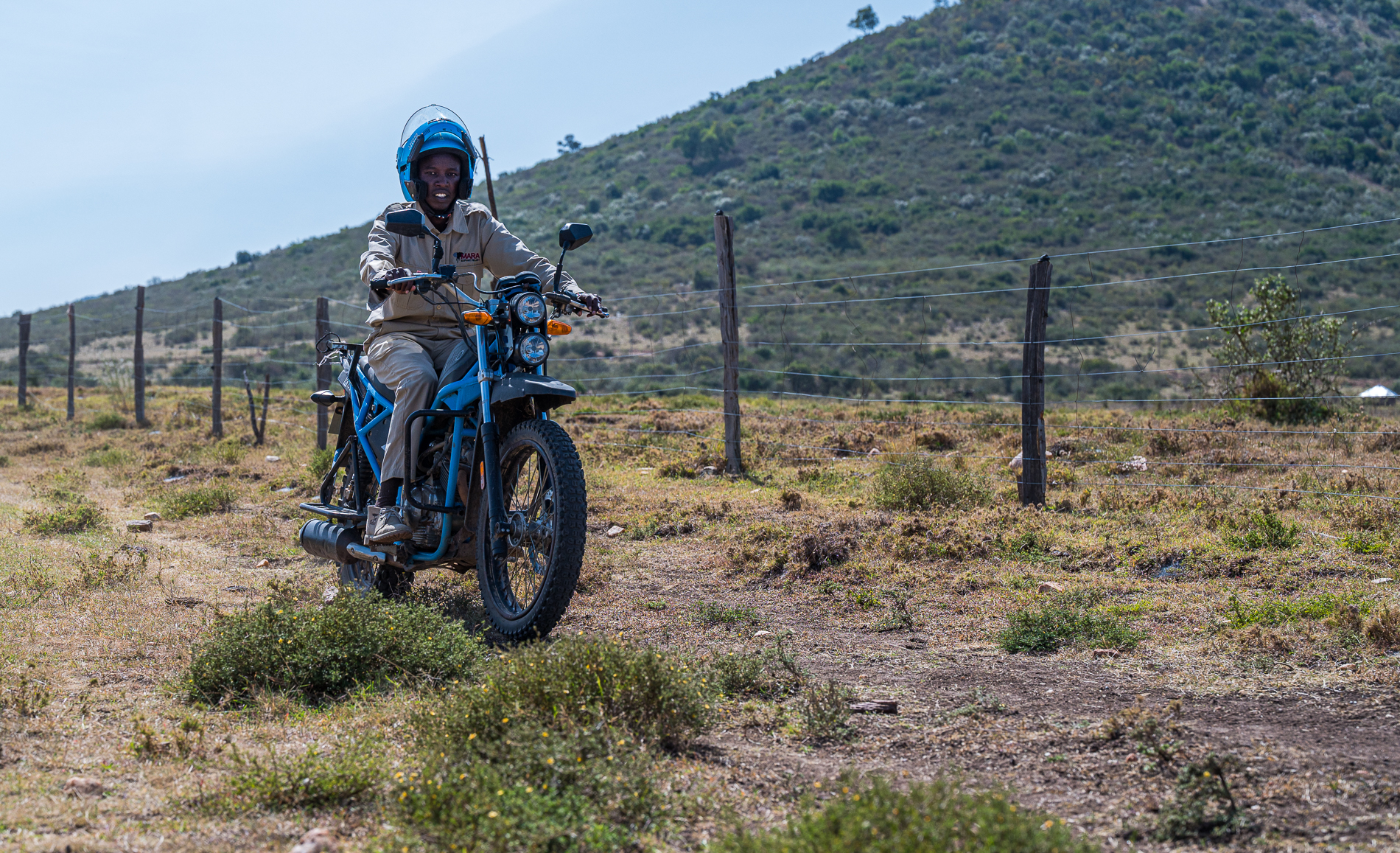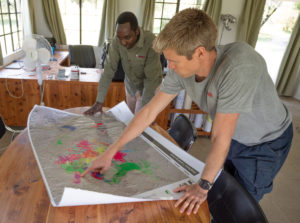 Mara Elephant Project’s Director of Research and Conservation Dr. Jake Wall (pictured left) started the second quarter off with a paper that was published, ‘Human footprints and protected areas shape elephant range across Africa’, in Current Biology on April 1. The study, done in collaboration with Save the Elephants, Wildlife Conservation Society, Oxford University, Elephants Alive, and Colorado State University, examined the range sizes of 229 GPS tracked elephants across the continent at two temporal scales and analyzed the effects of covariates on the areas occupied by elephants including samples from both species (savannah & forest). We found that at annual periods, it was mainly the human footprint and the presence of protected areas that determined the elephant’s home-range size (although sex and species were also important). We were able to use Google’s Earth Engine technology to scale the analysis across the continent and found that 62% of the 29 million square kilometers of the continent are potentially still habitable by elephants including range that Pliny the Elder once reported the presence of elephants in North Africa. Although they live in only 17% of the habitable range currently and probably because of their suppression by poaching and hunting, there is still hope that there’s still space for humans and elephants.
Mara Elephant Project’s Director of Research and Conservation Dr. Jake Wall (pictured left) started the second quarter off with a paper that was published, ‘Human footprints and protected areas shape elephant range across Africa’, in Current Biology on April 1. The study, done in collaboration with Save the Elephants, Wildlife Conservation Society, Oxford University, Elephants Alive, and Colorado State University, examined the range sizes of 229 GPS tracked elephants across the continent at two temporal scales and analyzed the effects of covariates on the areas occupied by elephants including samples from both species (savannah & forest). We found that at annual periods, it was mainly the human footprint and the presence of protected areas that determined the elephant’s home-range size (although sex and species were also important). We were able to use Google’s Earth Engine technology to scale the analysis across the continent and found that 62% of the 29 million square kilometers of the continent are potentially still habitable by elephants including range that Pliny the Elder once reported the presence of elephants in North Africa. Although they live in only 17% of the habitable range currently and probably because of their suppression by poaching and hunting, there is still hope that there’s still space for humans and elephants.
“We looked at every square kilometer of the continent to assess whether it would make suitable elephant habitat of which we believe elephants could occupy 18 million square kilometers – an area bigger than Russia.”
Dr. Jake Wall
The paper received several key media mentions at the time it was published and was reviewed as part of Dispatch published in Current Biology by Peter Leimgruber.
Life & Physical Sciences Reporter, Academic Times
MEP was able to financially support (with a donation of fuel and helicopter hours) and participate in the Kenya Wildlife Service Mara 2021 aerial census. The event was launched by Patrick Omondi and very well-coordinated and handled by our colleague and local area scientist – Stephen Ndambuki. Wilson Sairowua acted as a rear-seat observer while Marc acted as the front-seat observer and Riz Jiwa piloted the helicopter. MEP were assigned three census blocks including the Nyakweri Forest, which was included for the first time as part of the survey. The KWS Mara total count is typically run in the wet season before the arrival of the migrant wildebeest, zebra and gazelle that occurs beginning in late-July/early-August. David Kimanzi (MEP’s Data & Reporting Manager) helped the GIS team with collating and compiling the count data, and Sarafina Sironka helped with transcribing count dictations. We don’t have results yet, but MEP has committed to supporting KWS with finalizing and publishing the final report.
The MEP Research and Conservation Department has grown substantially in the last year and some important projects are starting to mature. Our long-term monitoring (LTM) team has made great strides in documenting individuals around Mara North and Lemek conservancies. In the second quarter, they’ve photographed and logged 225 individuals out of the estimated 2,500 individuals frequenting the Greater Mara Ecosystem (GME). As this team starts venturing further afield it will be interesting to see what they find.
The MEP LTM team with Conservation Officer Wilson Sairowua.
They’re tagging each individual with a ‘SEEK’ (System for Elephant Ear Knowledge) code that helps us to re-identify individual elephants using a methodology published by colleagues from Elephants Alive in South Africa in 2020. Data is uploaded in our bespoke ‘ElephantBook’ system we’ve been developing in collaboration with students from Caltech. At the start of June, we hosted George Wittemyer and Iain Douglas-Hamilton for a few days at MEP to get feedback on our ElephantBook system and the new LTM team.

A mom and baby captured by the LTM team.
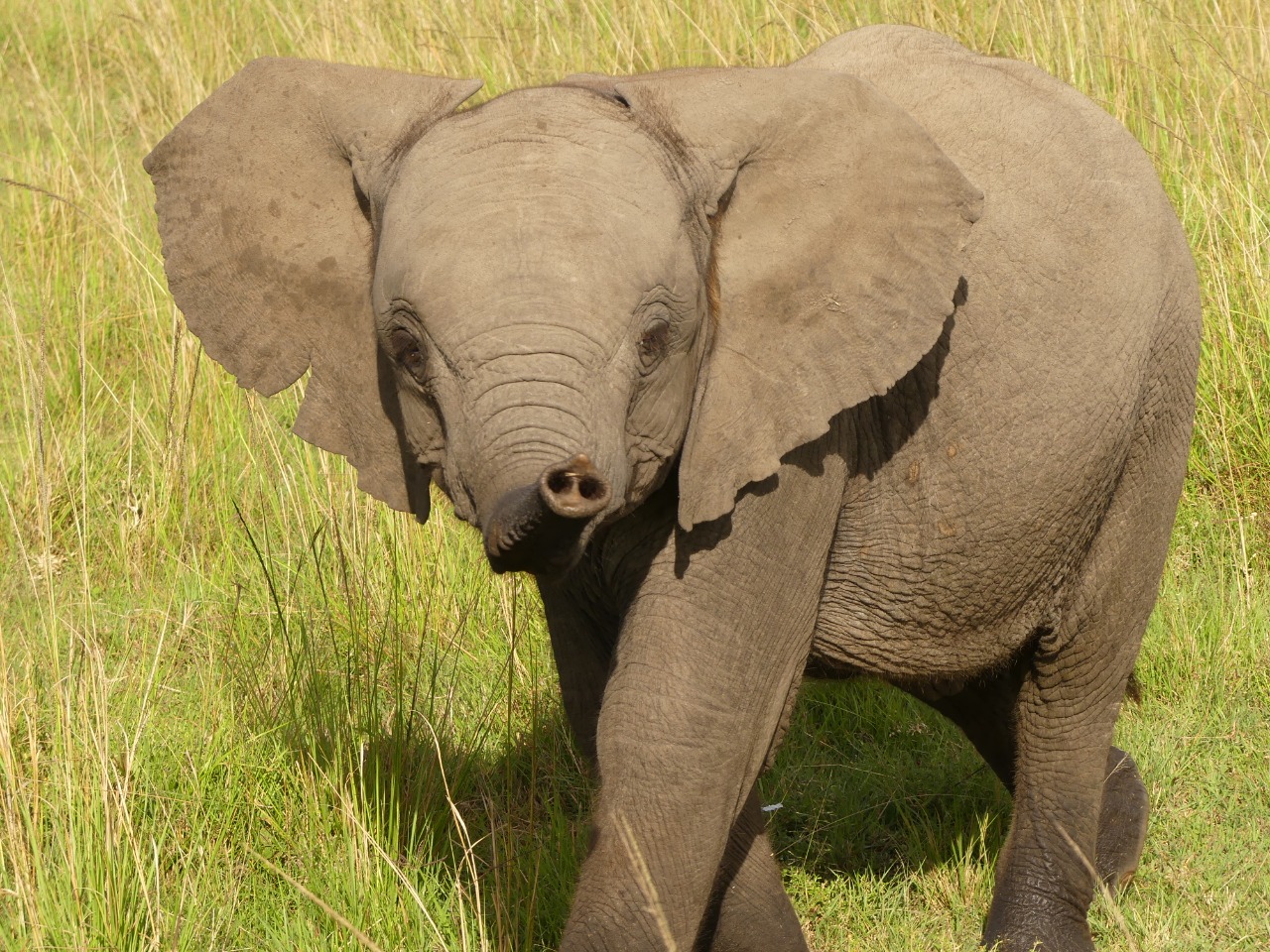
A baby elephant photographed by the MEP LTM Team in May.

The elephant ‘Vincent’ photographed in Lemek by the MEP LTM team in May.
The MEP fence mapping team continues to chart the expansion of fences across the Mara, and they added another 869 km of fences to our Landscape Dynamics database in the second quarter. MEP has now mapped nearly 4,000 km of fencing across the Mara. They also mapped 560 land-cover points that are helping us to run a classification of Sentinel-2 imagery useful in our understanding of elephant movements.
A member of the MEP team mapping fences.
MEP’s request to KWS for deploying a further 25 collars across the GME has now been approved and we are starting to look for new candidates in addition to the collars that need replacing on currently tracked individuals.
KWS and MEP collared elephant Fitz spent most of the second quarter inside the Nyakweri Forest with his herd of 60 making sporadic visits to the neighboring settlements to crop raid. Kegol was within Mara North Conservancy for the most of April with his range overlapping with Fred’s. In early April, he crossed into Olonkoliin farms and later our LTM team found the bull elephant that needed treatment for spear wounds with Kegol. In June, he was monitored again and found him alongside a previously identified individual, Flopsy. They were both in Mara North Conservancy (MNC) and appeared in good health. The MEP LTM team monitored Fred on June 17 after his collar was showing that he was moving at a low speed. When they arrived, they found him in good health and just slowly browsing along the Mara River. Newly collared elephant Clara started the month in Olpua Conservancy before streaking north to unprotected areas west of Ildugisho and Naikara towns. She briefly ventured into Olarro Conservancy and but then headed back to the unprotected areas crossing a road as she foraged around the hills and the riverine thickets. In May, she left Olarro at the start of the month and headed towards Loita Hills, to the west of Naroosura. She has been in these hills for the rest of May, with her two attempts to move further east cut short after encountering human settlements. Ivy was spotted by MEP rangers with her herd in early June.
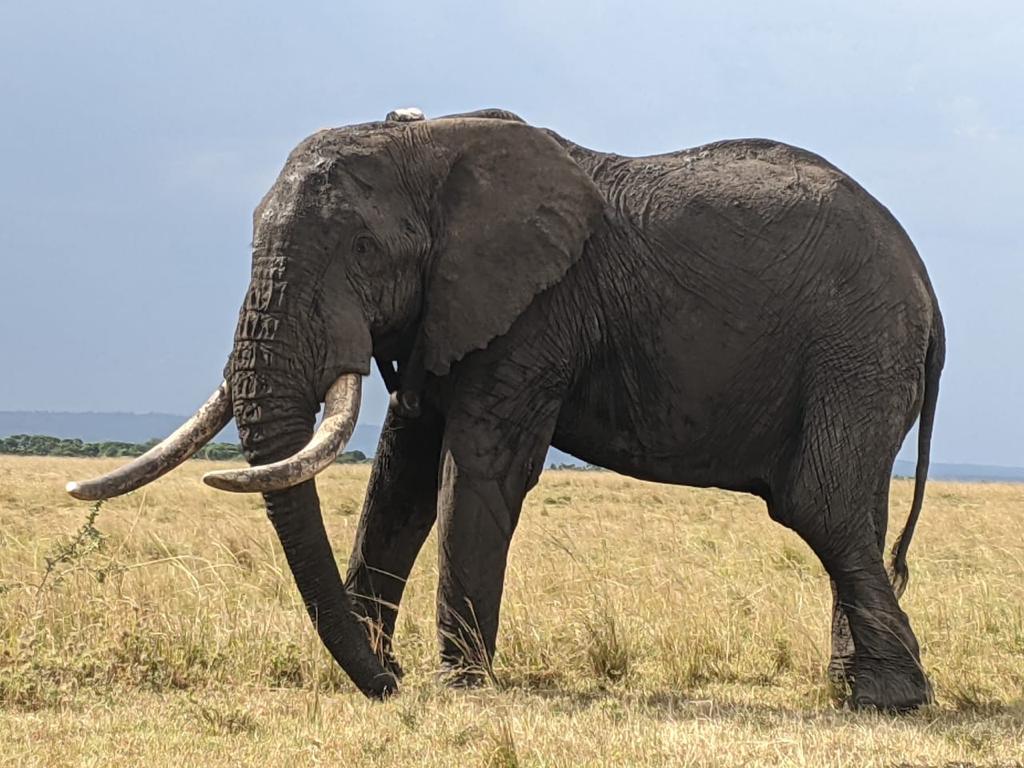
The MEP LTM team member Vincent monitored collared elephant Kegol on June 13 and found him alongside a previously identified individual Flopsy. They were both in Mara North Conservancy (MNC) and appeared in good health.
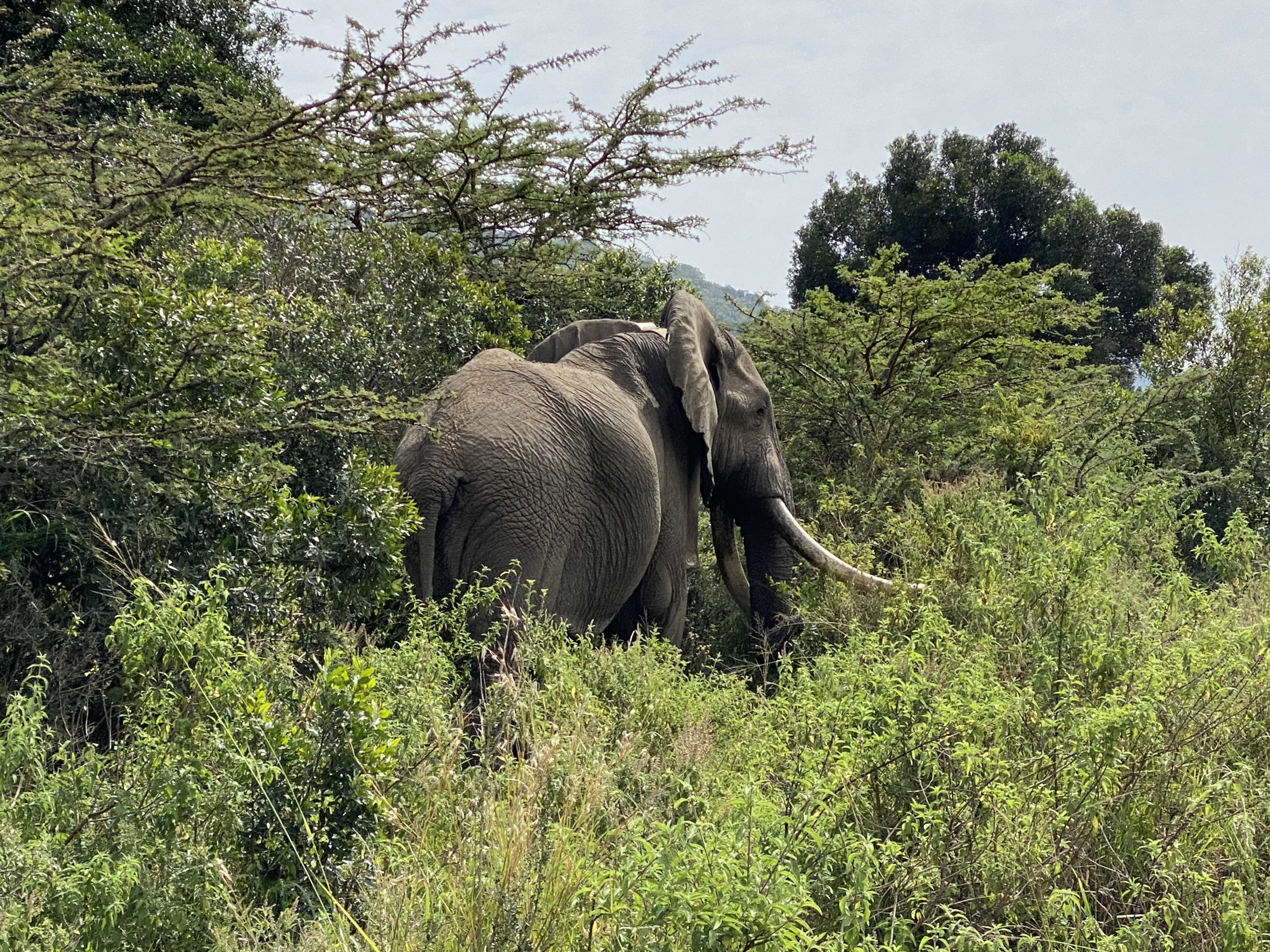
The MEP LTM team was monitored Fred on June 17 after his collar was showing that he was moving at a low speed. When they arrived, they found him in good health and just slowly browsing along the Mara River.
Some photos courtesy of Chags Photography.

